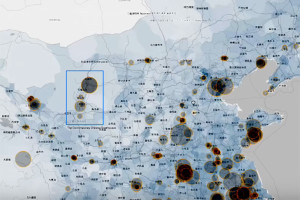
Associate professor of Chinese history Tom Mullaney and the Grave Reform in Modern China project aim to use quantitative data alongside articles and personal narratives to illustrate the movement of the remains of 15 million people over the last 15 years.
The project, which is currently in development, seeks to provide an innovative method to display the impact of grave relocation in China and its relationship with development in the country.
“The project systematically maps out places where the government is moving grave sites to new locations to make space for different kinds of new development, infrastructure or agricultural land,” said project collaborator David McClure, a digital humanities research developer at Stanford University Libraries and Stanford’s Center for Interdisciplinary Digital Research (CIDR), in a Jan. 8 article by Stanford News Service.
An interactive website will provide a two-panel view of the project’s research, in which one screen will show narratives about grave relocation while the main screen will display a map of China overlaid with data that users can sort with various filters.
Implemented over the last 30 years, China’s grave relocations are a controversial but less well-known aspect of the country’s population crisis, according to Mullaney. As cities expand, buried remains are moved or cremated and destroyed to make way for urban development.
“This government policy is transforming China’s graveyards into sites of acute personal, social, political and economic contestation,” Mullaney told the Stanford News Service.
The project’s combination of qualitative media reports, blogs, essays and stories with an interactive map showing quantitative information aims to provide an experience similar to a curated walking tour through data on the phenomenon.
The Grave Reform in Modern China project’s web platform is set to launch later in 2016.
Contact Michael May at mmay20 ‘at’ stanford.edu.
